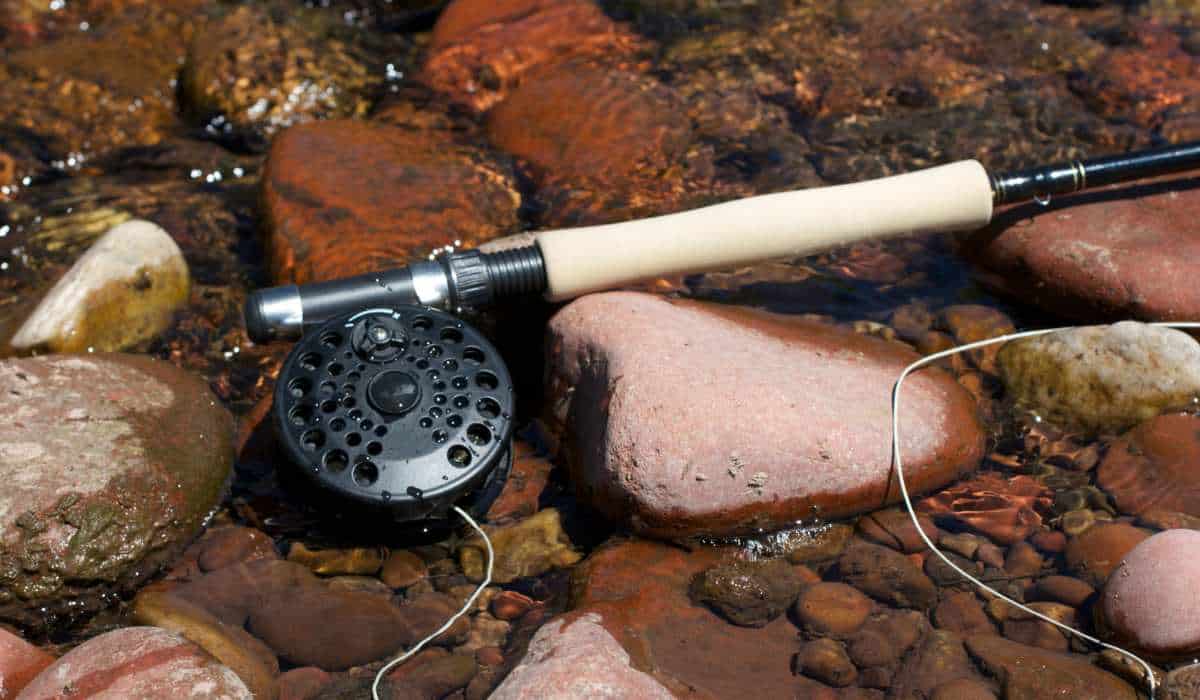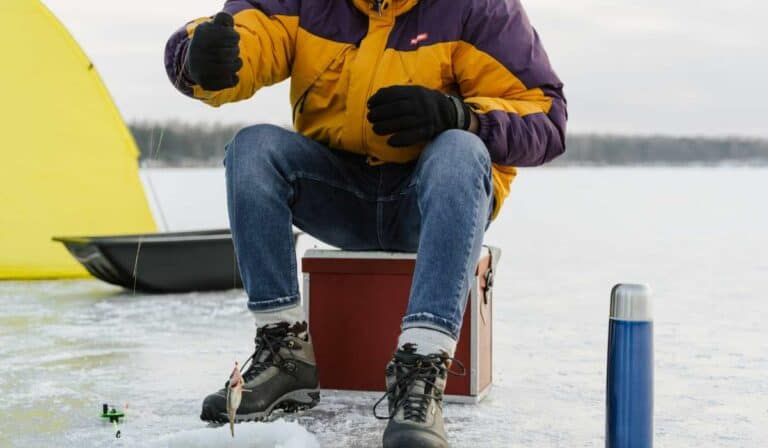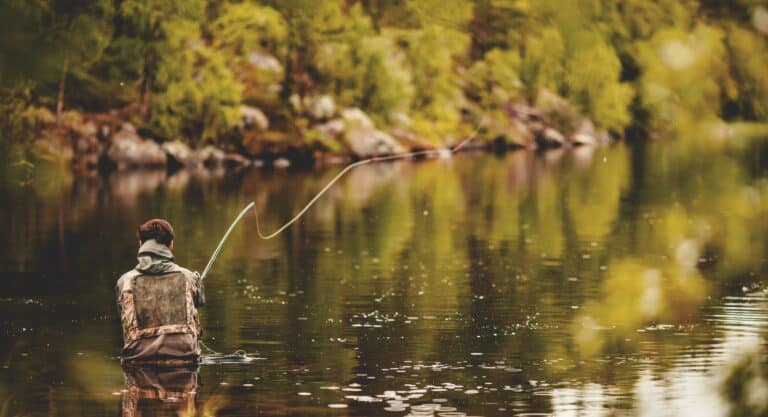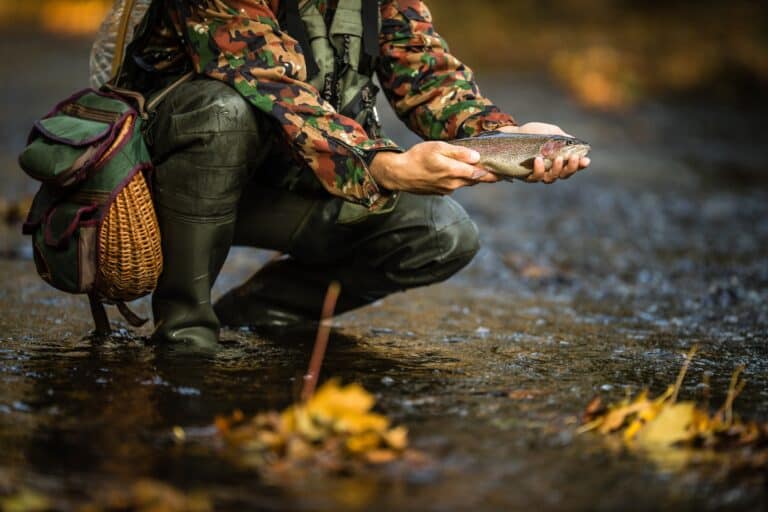The Best Trout Fishing Rods
Having the proper equipment can be a game-changer when angling for trout; thus, having quality trout fishing rods is essential. These specialized rods are designed to help you catch more fish and enhance your overall experience on the water. In this blog post, we will explore the features and benefits of using specialized trout fishing rods to help you catch more fish and enhance your angling experience.
We’ll discuss various types of trout fishing rods available in the market and their unique features. Additionally, we’ll explore the benefits of using a dedicated rod for targeting these elusive fish species. To ensure that you choose wisely, we will provide essential tips for selecting the right rod based on factors such as length, action, power rating and more.
Furthermore, proper maintenance is crucial to prolonging your rod’s lifespan; hence we’ll share some valuable care tips with you. Lastly, since even seasoned anglers can make mistakes when using these specialized tools or forget essential accessories needed for successful trout fishing adventures – don’t worry; our expert guidance has got you covered!
Table of Contents
1. Choosing the Best Trout Fishing Rods

Selecting the ideal trout fishing rod is critical for successful angling expeditions. With so many options available, it’s essential to know what features and materials to consider when selecting a rod specifically designed for catching trout. In this section, we’ll delve into the important features and materials to consider when selecting a trout fishing rod.
Materials
The material used in constructing a fishing rod plays an important role in its performance and durability. There are three primary materials commonly used:
- Graphite: Lightweight and sensitive, graphite rods allow you to feel even the slightest nibble from a fish. Yet, they may not be as robust compared to other materials.
- Fiberglass: Known for its durability and flexibility, fiberglass rods are less sensitive but can handle larger fish with ease.
- Composite (graphite/fiberglass blend): These rods offer the best of both worlds – sensitivity from graphite combined with strength from fiberglass.
Action & Power
The action refers to how much bend or flex there is in the rod while power indicates its overall strength. For trout fishing, look for a medium-light power rating with moderate-fast action as it provides enough backbone without sacrificing the sensitivity needed for detecting bites. Learn more about choosing the right action and power here.
Rod Length & Handle Design
Selecting an appropriate length is crucial since longer rods provide better casting distance while shorter ones offer increased accuracy. A good starting point would be between 6-8 feet long depending on your preferred technique and location.
Additionally, consider the handle design and material for comfort during long fishing sessions.
Selecting the right trout fishing rod necessitates taking into account one’s own specific requirements and tastes. With this in mind, let’s explore the different types of trout fishing rods available on the market today.
Click here to read about Discover Lake Piru Fishing: Top Spots, Tips & Activities
2. Types of Trout Fishing Rods
Angling for trout can be a thrilling and fulfilling pastime, yet to obtain the most out of it, you must have the right apparatus. Various kinds of trout fishing rods can be obtained in the market, each tailored to particular strategies and conditions. In this section, we’ll explore three popular types: spinning rods, baitcasting rods, and fly rods.
Spinning Rods
Spinning rods are versatile and user-friendly options for beginners as well as experienced anglers. They’re ideal for casting lightweight lures or baits with precision and can handle a wide range of line weights. Spinning reels are mounted below the rod which makes them comfortable to use all day long.
Baitcasting Rods
If you’re looking for more control over your casts and want to target larger trout species in heavy cover or strong currents, baitcasting rods might be your best choice. These powerful tools require some practice due to their unique reel design but offer excellent accuracy once mastered.
Fly Rods
Last but not least are fly fishing rods, specifically designed for presenting artificial flies that mimic insects on the water surface or just beneath it. Fly fishing offers a unique challenge compared to other methods since it requires mastering specialized casting techniques while managing line tension at all times.
Having acquired a knowledge of the various trout fishing rods, it is now time to explore their attributes and advantages in order to select the one most suitable for your requirements.
The types of trout fishing rods available are varied and can be tailored to the individual’s specific needs. Researching what kind of rod to buy is key for getting the most out of trout fishing, as different types bring different advantages.
3. Benefits of Using a Trout Fishing Rod

Choosing a trout-specific rod can drastically improve your success and pleasure while fishing for these cunning creatures. Here are some key benefits to consider when choosing a trout-specific rod:
- Sensitivity: Trout rods are designed with sensitivity in mind, allowing you to feel even the slightest nibble from these elusive fish. This increased sensitivity will help improve your hook-setting skills and ultimately land more fish.
- Action: The action of a trout rod is typically faster than other types of fishing rods, which means it bends closer to the tip rather than throughout its length. This feature allows for better casting accuracy and quicker response time when setting hooks.
- Weight: Most trout rods are lightweight, making them comfortable to use for extended periods without causing fatigue. A lighter rod also makes it easier to cast small lures accurately – essential when targeting finicky trout.
- Versatility: While specifically designed for catching trout, these rods can also be used effectively for other species like panfish or smaller bass by simply adjusting your tackle setup accordingly.
In addition to these performance benefits, investing in a quality trout fishing rod will provide long-lasting durability that withstands countless trips out on the water. So whether you’re exploring remote mountain streams or enjoying local lakeshores, trout fishing with the right equipment will enhance your overall experience and increase your chances of landing those beautiful fish.
The benefits of using a trout fishing rod are vast, ranging from increased casting distance to better accuracy when landing your catch. Once you have decided on the advantages of a trout fishing rod, it is time to pick the best one for your needs – this article will provide guidance in doing so.
Click here to read about Best Underwater Cameras for Ice Fishing
4. Tips for Selecting the Right Trout Fishing Rod
Here are some tips to help you choose the best rod for your needs and budget:
- Consider Your Experience Level: If you’re new to trout fishing, it’s best to start with an affordable yet reliable spinning or baitcasting rod. As your skills improve, consider upgrading to a higher-quality fly rod. Learn more about different types of rods here.
- Choose the Right Length and Power: Trout rods typically range from 6-9 feet in length, with shorter rods offering better control while longer ones provide greater casting distance. The power rating (ultralight, light, medium) should match your preferred lure size and line weight.
- Select Quality Materials: Look for high-quality materials like graphite or carbon fiber that offer strength without adding too much weight. Additionally, pay attention to components such as guides and reel seats – they should be durable and corrosion-resistant. Discover more about quality materials used in trout fishing rods here.
- Budget Wisely: While it may be tempting to purchase an expensive top-of-the-line model right away, bear in mind that there are many excellent options available at various price points. Check out some of the best trout fishing rods for different budgets here.
Remember, the right rod can make all the difference in your trout fishing experience. Investigate and experiment with a range of possibilities prior to settling on one – you won’t regret it.
Having the right trout fishing rod can make a huge difference in your success rate and overall enjoyment of this sport. To guarantee your rod’s longevity, it is essential to keep up with its maintenance. Next up, we’ll discuss some tips on how to properly maintain your trout fishing rod.
5. Maintenance Tips for Trout Fishing Rods

Maintaining your trout fishing rod is essential to ensure its longevity and optimal performance on each outing. Here are some tips to help you properly care for your rod:
- Clean after every use: After a day of fishing, it’s crucial to clean your rod with fresh water, especially if you’ve been in saltwater environments. Gently wipe away any dirt or debris with a soft cloth or sponge to maintain your rod and reel.
- Inspect regularly: Check your trout fishing rod for any signs of damage before and after each trip. Look out for cracks, loose guides, or damaged reel seats that may need repair or replacement.
- Dry thoroughly: Ensure that your rod is completely dry before storing it away. Moisture can cause corrosion and weaken the materials over time. Stow the rods in a chill, arid position out of direct sunlight.
- Lubricate moving parts: Apply lubricant to all moving parts of the reel as needed. This will keep them functioning smoothly and prevent rusting.
- Avoid high temperatures: Don’t leave your trout fishing rods inside hot vehicles during summer months as excessive heat can warp or damage components like grips and epoxy coatings on guide wraps.
Taking proper care of your trout fishing equipment not only ensures better performance but also saves money by preventing premature wear and tear on costly gear replacements. So make sure you follow these maintenance tips so you can enjoy more successful outings while exploring the great outdoors.
Maintaining your trout fishing rod is essential for ensuring a successful and enjoyable day out on the water. By following these maintenance tips, you can ensure that your equipment will be in good condition when it comes time to use it. To ensure that our trout fishing rod is in top condition, let’s review the common mistakes people make while using them.
Click here to read about Best Ultralight Fishing Rod/Reel Combos
6. Common Mistakes When Using Trout Fishing Rods
Avoiding errors while trout fishing is critical to ensure a successful outing, so selecting the right rod length is paramount. By being aware of these pitfalls, you’ll have a better chance of success on your next fishing adventure.
Mistake 1: Choosing the Wrong Rod Length
One common mistake is selecting a rod that’s too short or too long for your needs. A properly sized rod will provide better casting accuracy and control when fighting a fish. For most trout fishing situations, rods between 6-8 feet in length are ideal.
Mistake 2: Overloading Your Line Weight
Using line weight that exceeds the recommended range for your rod can cause damage and reduce performance. Stick within the manufacturer’s suggested line weight limits to ensure optimal results.
Mistake 3: Ignoring Rod Action & Power Ratings
Rod action (how fast it bends) and power (strength) ratings are crucial factors when choosing a trout fishing rod. Selecting an inappropriate action or power rating may make it difficult to detect bites or properly set hooks, resulting in missed opportunities.
- Action: Moderate-fast action rods offer versatility for various lures and techniques used in trout fishing.
- Power: Light-to-medium power rods work well with lighter lines typically used for catching trout.
Tips To Avoid These Mistakes:
- Educate yourself on the basics of fishing rods before making a purchase.
- Consult with experienced anglers or local tackle shops for advice on selecting the right rod for your needs.
- Always double-check your equipment and settings before heading out to fish.
Avoiding these common mistakes will help ensure you have an enjoyable and successful trout fishing experience.
It is important to be aware of common mistakes when using trout fishing rods in order to have a successful and enjoyable experience. To ensure that your next outing is as fruitful as possible, it’s essential to understand the accessories you need for trout fishing.
7. Accessories You Need for Trout Fishing

To maximize your success while trout fishing, it is essential to have the right accessories. Here are some essential items you should have on hand when trout fishing:
Lures
Lures play a crucial role in attracting trout to your line. Different types of lures, such as spinners, spoons, jigs and soft plastics, can be employed depending on the fishing conditions and trout species. Each type has its advantages depending on factors like water conditions and trout species.
Fishing Line
A quality fishing line is vital for successful trout fishing as it affects casting distance and sensitivity to bites. Monofilament lines are popular due to their versatility while fluorocarbon lines offer low visibility underwater – perfect for stealthy approaches.
Fishing Reels
The right fishing reel will help ensure smooth casting and efficient retrieval of your catch. Spinning reels are commonly used for their ease of use; however, baitcasting reels provide more control over lure placement if you’re targeting specific spots.
Tackle Box Essentials
- Hooks: Carry various sizes (6-12) with different styles such as single or treble hooks.
- Bait: Live baits like worms or minnows work well alongside artificial options.
- Bobbers: Useful for keeping your bait at a specific depth and detecting bites.
- Sinkers: Add weight to your line, allowing you to cast further and reach deeper water.
With these essential accessories in hand, you’ll be well-prepared for an enjoyable and successful trout fishing adventure.
Click here to read about Best Time to Catch Tuna in Louisiana
FAQs Best Trout Fishing Rods
What Type of Rod is Best for Trout?
The ideal rod for trout fishing depends on the specific situation and angler’s preference. Generally, a lightweight spinning or casting rod with medium power and fast action is suitable for most scenarios. These rods provide sensitivity to detect subtle bites while offering enough backbone to handle larger fish. For fly fishing, a 4-6 weight fly rod works well.
What is the Best Rod Length for Lake Trout?
For lake trout fishing, a longer rod between 7-9 feet in length is recommended. This allows for better casting distance and control when using heavier lures or bait rigs. Longer rods also help maintain tension on the line during fights with powerful fish like lake trout.
Conclusion
There are various types of rods available, and each has its benefits. Remember to select a rod that suits your needs and preferences.
Maintaining your trout fishing rod is crucial to ensure it lasts longer. Avoid common mistakes when using the rod, such as applying too much pressure or using the wrong bait. Additionally, having accessories like reels and lines can improve your chances of catching fish.







